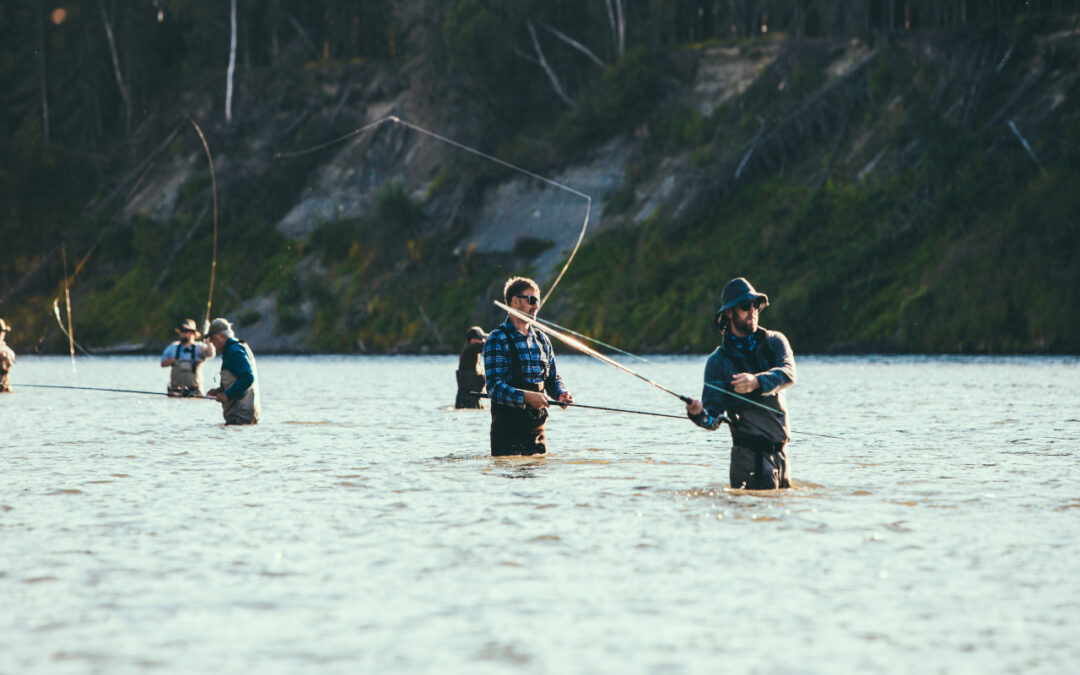Fly fishing is a special approach to fishing. Fly fishing is different from bait-casting or spin-casting because fly fishing uses a weighted line to carry the nearly weightless bait forward when casting. Traditional fishing tackle is designed to have a nearly weightless line carried by a weighted bait in the end. Because of this difference, fly fishing has its gear, equipment, and terminology.
Fly fishing also requires some different techniques than traditional fishing. Traditional fishing may involve casting a baited hook and waiting for a fish to bite or casting and retrieving a baited hook. However, fly fishing involves repeated casting with brief pauses to allow the fly to float in the current.
Fly fishing rods are different than traditional fishing rods in several ways. Fly fishing rods are longer than most fishing rods, frequently between six and nine feet. Some fly fishing rods are even longer than nine feet, particularly those rods designed for salmon or steelhead fishing.
Fly fishing reels vary from traditional fishing reels as well. Fly fishing does not require much use of the reel. Early fly fishing reels were little more than storage space for the line. Fish are not reeled in when caught, rather, the angler strips line with the freehand. Fly reels are still very primitive with designs similar to those used in the 19th century. Fly fishing line is quite different from traditional fishing line. While the traditional fishing line is made of a clear and monofilament material, the fly fishing line is comparatively heavy and translucent.
Fly fishing lines may be designed to float or sink, depending on the style of fishing. The line also may be tapered or level, again depending on the type of fishing that is planned and the preference of the angler. Fly fishing line is available in different weights. The heavier line can be cast further and has greater wind resistance than the lighter line. However, a lighter line may provide for more precise casting by an experienced angler. Fly fishing line is normally around 90 feet long but may be attached to a backer to lengthen the overall line available for fish that like to fight.
A leader is attached to the end of the fly fishing line. The fly is tied to the end of the leader. The leader is a clear and monofilament line, normally between six and fifteen feet in length. The leader is tapered to a narrower diameter at the end of the line.
There are a variety of fishing opportunities with fly fishing. Fly fishing techniques can be used in streams, rivers, ponds, and lakes. It works in salt water, fresh water, cold water, and warm water. Fly fishing can open up many opportunities to fish in new waters because the techniques and equipment are adaptable.
Fly fishing includes an interesting history that extends back to the second century. Macedonian fishermen successfully used artificial flies on six-foot poles to catch fish. Fly fishing popularity increased in 19th century England and Scotland before catching on in the United States.
Fly fishing is a historically interesting, challenging approach to fishing. Fly fishing offers many opportunities and variations to anglers. Fly fishing also includes a nostalgic element that might not be found in other fishing styles.


